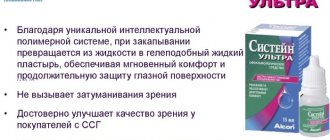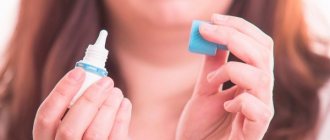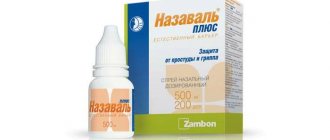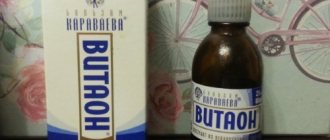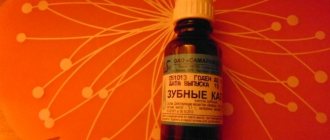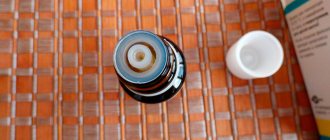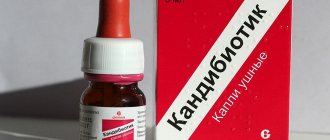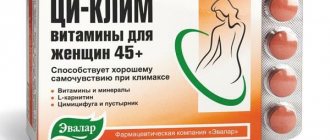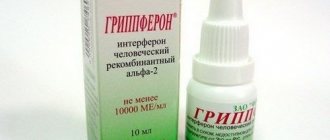- October 26, 2018
- Ophthalmology
- Arina Klein
What is conjunctivitis? In medical practice, this term is used to refer to the process of inflammation of the mucous membrane of the visual organ (or conjunctiva). This pathological condition can occur due to exposure to certain allergens, as well as infections of viral or bacterial origin.
Currently, adenoviral, chlamydial, bacterial, herpetic, enteroviral, chronic, allergic or acute conjunctivitis are distinguished.
Statistics indicate that in adults, in 85% of cases, inflammation is caused by adenoviruses and only 15% by bacteria. As for adolescents and young children, adenoviral and bacterial conjunctivitis occurs with equal frequency.
How does inflammation manifest? Conjunctivitis is characterized by swelling of the eyelids, hyperemia and swelling of the conjunctiva, lacrimation, photophobia and redness of the white of the visual organ. It should be noted that all of the listed symptoms of the disease may vary depending on the causes of the inflammation process.
General information
What drug is effective for conjunctivitis? Systane eye drops are one of the most popular ophthalmic products, which belongs to the group of rehydrants and is actively used to moisturize the eyes.
The medication in question effectively eliminates all signs of irritation and dryness of the visual organs. Due to its special consistency, the polymer inert solution is not capable of exerting a mechanical effect on the mucous membrane of the eye.
This medicine is actively used to moisturize the membrane of the visual organs. The drug does not negatively affect the process of tear fluid production, but only forms a protective film that helps eliminate all unpleasant symptoms that arise due to the influence of external factors.
Side effects
Systane is a drug that is well tolerated by patients. Thanks to its simple composition, as well as its exclusively local effect on the pathological area, the chance of developing undesirable consequences is close to zero. The exception is patients with hypersensitivity to one of the components of the medication. In this case, the following unpleasant consequences may occur:
- redness;
- itching;
- edema;
- mucous discharge from the eyes.
Compliance with the rules for using Systane in the absence of congenital or acquired problems with the immune system helps to increase the popularity of drops among patients.
Composition and packaging of an ophthalmic product
What substances do Systane drops contain? This drug contains no separate active ingredients. Its therapeutic effect is achieved due to the combined action of such components as sodium chloride, polydronium chloride, 0.001% polydronium chloride, potassium chloride, purified water intended specifically for injection and instillation, hydroxypropyl guar, calcium chloride, sorbitol, sodium hydroxide, zinc chloride, polyethylene glycol, propylene glycol and boric acid.
Systane drops are sold in 15- or 10-ml dropper bottles, which are placed in cardboard boxes.
Balance
Systane Balance drops have significant differences from the first two types of Systane eye drops. The recipe contains boric acid, dimyristoyl phosphatidylglycerol, disodium edetate, hydroxypropyl guar, mineral oils, polyoxyl stearate, Polyquad, sorbitol, sorbitan tristearate, purified water. The drug may contain sodium hydroxide or perchloric acid to achieve the desired pH.
This drug is most effective if the cause of dry eyes is meibomian gland dysfunction.
Firstly, they contain 0.6% of the active component propylene glycol versus 0.4% in the classic version. Secondly, for the first time a special system of mineral oils has been introduced into the drops, which makes it possible to stabilize the lipid layer of the tear film, which makes the drops more effective for long-term hydration of the cornea.
Action of the medication
How do Systane eye drops work? The use of such a drug helps reduce dryness and symptoms of eye irritation (for example, burning sensation, itching, redness).
The therapeutic effect of the medication begins almost immediately after instillation and lasts throughout the day.
When Systane drops get on the mucous membrane of the eye, a delicate polymer film is formed that protects the visual organ from irritation and drying out. Throughout the day, the moisturizer is gradually washed away naturally (along with tears).
Contraindications
The main contraindication to the use of the drug is personal intolerance to its components. Hypersensitivity to eye drops is indicated by symptoms such as red eyes, watery eyes, itching, burning or blurred vision. If a similar reaction occurs after instillation, you should stop use and consult an ophthalmologist.
The drug is not prescribed to children under 18 years of age, pregnant women, and nursing mothers, because the safety and effectiveness of its use in childhood and during pregnancy and lactation have not been studied.
Other indications
In what other cases can Systane drops be used? In addition to eliminating dry eye syndrome, this drug can also be used to protect the visual organs from ultraviolet radiation. The film formed on the mucous membrane of the eye has a small throughput, which reduces the negative effects of direct sunlight.
Sometimes Systane drops are recommended to be used before swimming in natural bodies of water or visiting public pools. The use of the drug in such cases will not allow bleach, pathogenic microorganisms or other bacteria to settle on the mucous membrane of the eye.
When working in a polluted environment, hot climates and rooms where air conditioning is used, the product in question can be used to prevent dehydration and irritation of the visual organs.
Systane eye drops: instructions for use
A moisturizing ophthalmic preparation is used one to several times a day. It is instilled in the amount of 1-2 drops into each visual organ (as needed).
To obtain the best therapeutic effect, immediately after installations you should blink quickly several times. This is necessary so that the medication spreads over the entire surface of the conjunctiva and reliably protects the eyes.
If the patient was prescribed drops for the treatment of viral diseases or other serious pathologies, then using such drugs in parallel with Systane is not recommended in order to avoid weakening their therapeutic effect.
Interaction with other drugs
Systane does not combine well with local drugs for the treatment of ophthalmological pathologies. The problem is the formation of a specific film, which then prevents other bioactive molecules from entering the eye.
Considering this fact, the use of ointments, creams or other means of local treatment of the visual apparatus should be carried out before the introduction of drops or no earlier than 30-40 minutes after instillation.
Otherwise, a barrier impenetrable to most biomolecules is formed, which worsens the quality of the treatment. If it is necessary to use Systane together with other medications, you must first draw up an adequate regimen for using drops, ointments and other external forms of therapy to achieve optimal results.
Overdose
In ophthalmological practice, there are practically no cases of overdose with Systane drops. Only isolated situations have been recorded where the use of the drug in large quantities or for a long time contributed to a change in the composition of the tear fluid, as well as disruption of the function of the glands that produce tears.
It should also be noted that when using drops for a long period, the patient may experience an unpleasant taste in the mouth. In addition, long-term use of the drug can greatly reduce its effectiveness (almost completely absent). In such situations, you should contact a specialist who will replace the ophthalmic drug with a similar one, but with a different composition.
What to replace
All types of Systane drugs are interchangeable. But in their absence, you can also select analogues from other groups of products for moisturizing the cornea:
Gilan eye drops
- Visine pure tear (TS-polysaccharide);
- Oksial, Hilo-chest, Artelak (Hyaluronic acid);
- Hypromelose-P, Hypromelose (Hydroxymethylcellulose);
- Vidisik, Oftagel (Carbomer);
- Aistil (Sodium hyaluronate).
Analogs
What can replace the ophthalmic drug "Systane"? A direct analogue of this product is Systane Ultra drops. Experts say this is an improved version of the drug. It costs a little more, but there are practically no differences in the composition. It should also be noted that the effectiveness of Systane Ultra and Systane drops is approximately the same.
The following eye medications have also proven themselves to be effective:
- "Okutiarz" (relieves the feeling of dryness, used after intense visual work).
- “Cationorm” (eliminates even severe signs of dry eyes).
- "Visomitin" (strong keratoprotector, eliminates dry eyes).
- “Inoxa” (moisturizes the conjunctival membrane, helps eliminate “dry eye syndrome”, protects the visual organs from microscopic foreign bodies and pathogenic infections).
- “Oxial (moisturizes the eye membrane, relieves symptoms of irritation and fatigue of the visual organs, is identical to human tear fluid).
- “Ophtolik” (used to moisturize the eyes of people with reduced tear secretion, eliminate fatigue, irritation and redness).
- "Vidisik" (keratoprotector, has a moisturizing effect, is an inert and biologically neutral agent).
Ultra
The next representative of the Systane family was Systane Ultra drops. The content of active components is similar to the classic composition, but, according to the manufacturer, due to a different combination of excipients (aminomethylpropanol, boric acid, hydroxypropyl guar, Polyquad, sorbitol, KCl, NaCl) it was possible to achieve better physical characteristics of the solution for more comfortable use.
The drug is available in a bottle and as a monodose for one-time use
The addition of sorbitol and aminomethylpropanol makes the Ultra variation more viscous, although, according to user reviews, this difference is little felt.
Before use, the instructions recommend shaking the bottle to make the contents more uniform. Place one or two drops into your eyes to prevent discomfort from dry eyes.
Price of the medicine, additional recommendations
The average cost of the Systane ophthalmic product is 500 rubles (in the central regions - about 540 rubles).
When instilling the drug in question, it is not necessary to remove contact lenses. Systane eye drops do not form compounds and do not contain substances that could in any way affect the optics. After using the medicine, a protective film also forms under contact lenses.
The medication in question is not an antiseptic. It also does not have antibiotic properties.
After instillations, the patient does not experience any visual disturbances. In this regard, immediately after the treatment procedure you can drive a vehicle.
General instructions
Since Systane products create a protective film on the surface of the eye, if it is necessary to use other ophthalmic agents, a 15-minute pause must be maintained between their applications so that the medicine can penetrate the cornea.
Also, moisturizing drops are subject to the requirement to maintain the cleanliness of the medicine itself and the spout of the dropper bottle. During use, do not touch the eyelashes, the eye itself, or other surfaces. They must be stored closed under the conditions specified in the instructions. For safe use, be sure to follow the deadlines within which the drug can be used after opening the bottle. If the bottle changes color or becomes cloudy, discard it.
Reviews
Most patients speak exclusively positively about the drug Systane. They claim that the use of such a medicine can quickly eliminate all existing discomfort, as well as get rid of irritation and redness of the cornea.
In addition, the patient is informed that Systane drops well muffle the burning sensation and relieve the feeling of a foreign body in the visual organs.
Experts support all the positive reviews from people. They claim that the film that forms on the conjunctiva immediately after applying the medicine protects the eyeball from almost all external influences, including smoke, wind, dust and chemical fumes. Experts also report that, unlike other similar means, a single instillation of Systane is enough for almost the whole day.
Gel
Another variation of the drugs in this line is Systane gel drops, which the manufacturer describes as extra protection. The drug contains polyethylene glycol 400, propylene glycol, aminomethylpropanol, boric acid, disodium edetate, hydroxypropyl guar, Polyquad, KCl, NaCl, sorbitol. Drops are used to relieve discomfort in the eyes, to prevent irritation from wearing lenses, and also to restore normal moisture to the cornea during night rest.
The product has a more viscous consistency than other Systane drops
A common distinctive feature of all Systane drops is the presence of Polyquad®, a special detergent-type preservative. Unlike other preservatives (for example, benzalkonium chloride), Polyquad is repelled by corneal cells and does not cause irritation, but at the same time it is attracted to bacterial cells and helps clean contact lenses from them. Initially, Polyquad was developed for their storage.
The presence of this component allows the use of Systane drops in people wearing contact lenses. Drops are applied before putting on the optical system to prevent irritation and eye fatigue, as well as after removing it. It is not recommended to drip the product directly onto the lenses.
Another of the latest developments of the Alcon company is the ophthalmic Systane gel. It is declared by the company as a forte (enhanced) product, since it has the thickest gel composition and covers the eye with a dense layer of film, providing long-term night protection while sleeping. It contains hypromelose, a polysaccharide that actively retains water and preserves its own tear film. High viscosity of the gel is provided by carbopol 980, phosphonic acid, purified water, sodium perborate and sorbitol.
